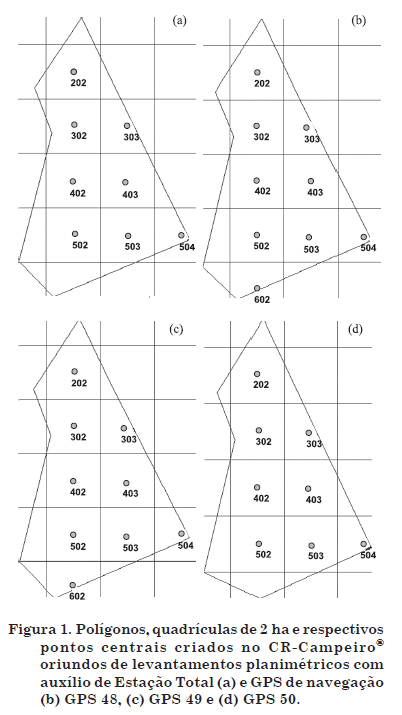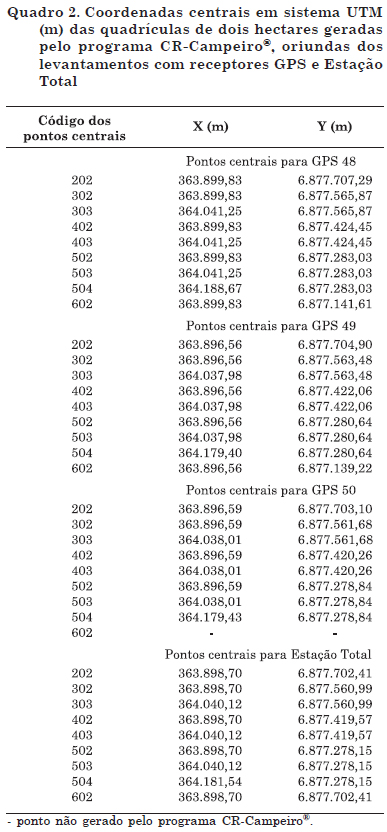Navigation recipients of the global positioning system (GPS), widely used in the agricultural sector, in general, have a positional accuracy of < 10.0 m. In systematic soil sampling, sub-samples should be collected within a radius of not more than three meters from the central georeferenced point. In this technical note, precision and accuracy of this equipment were contrasted with the requirements of systematic soil sampling. An area of approximately 17 ha, on Campus I of the University of Passo Fundo, was surveyed with three GPS navigation receivers and a total station-TS (control). Central square plots of 2 ha, generated by the program Campeiro ®, were located in the field with the same equipment. At these points, marked in the field, the coordinates were surveyed again using the total station. The X and Y coordinates were subjected to ANOVA, comparing the means evaluated by TS with GPS receivers for Tukey's honest significant difference (p < 0.01). For accuracy, the linear distances between points generated by the GPS and the TS were calculated by Pythagoras, assuming inaccuracy when the three-meter radius recommended by the Manual of Fertilization and Liming of Rio Grande do Sul and Santa Catarina for soil sampling was exceeded. The accuracy of coordinates determined by GPS receivers ranged from -10 to +3 m for X and from -4 m to +7 m for Y. Only one central point of the eight determined by GPS receivers in the center of the squares met the standard of accuracy required in practice. This indicates that the low precision and accuracy of the equipment rule out the use for systematic soil sampling.
GPS; precision agriculture; soil sampling





